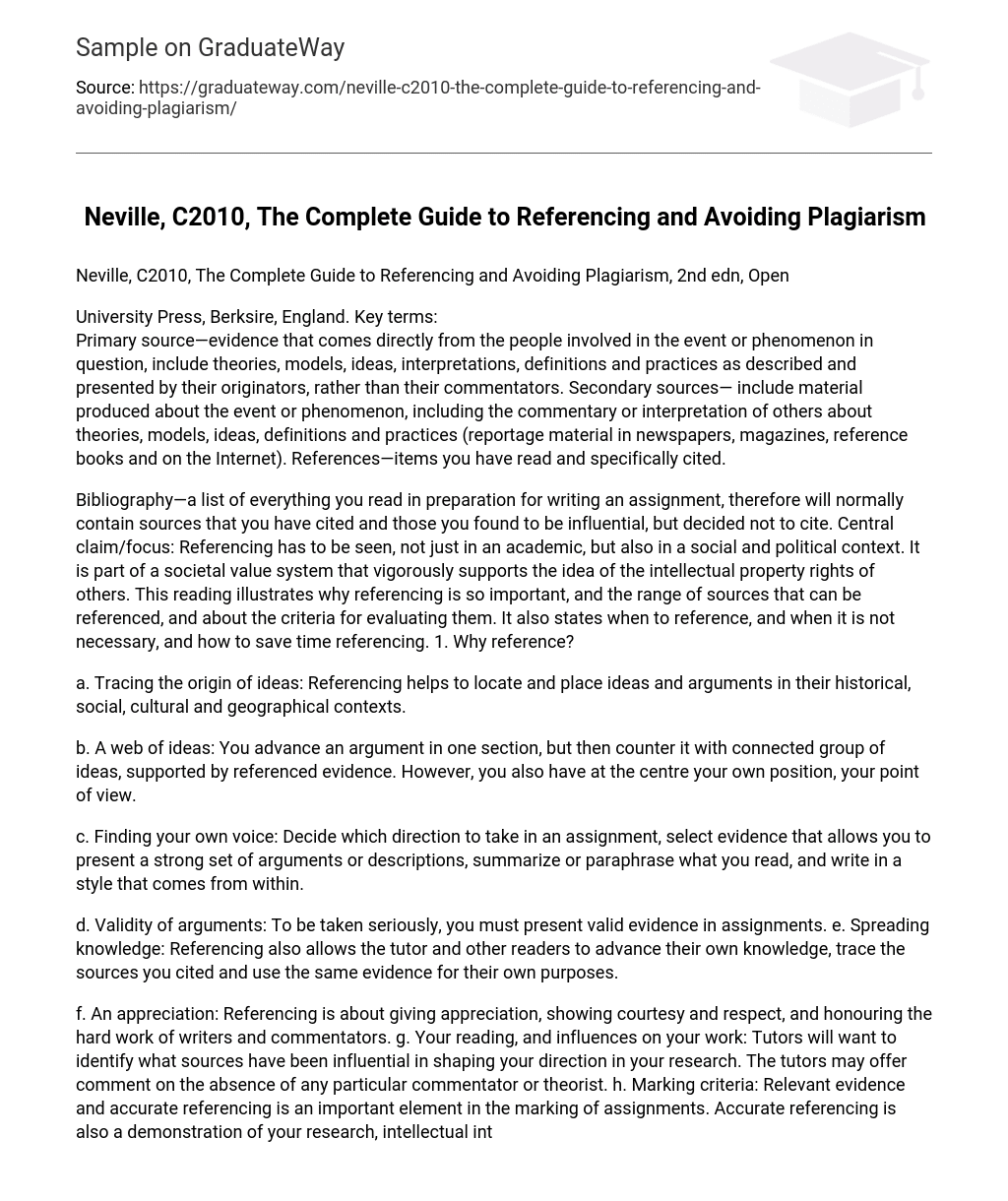Primary source—evidence that comes directly from the people involved in the event or phenomenon in question, include theories, models, ideas, interpretations, definitions and practices as described and presented by their originators, rather than their commentators. Secondary sources— include material produced about the event or phenomenon, including the commentary or interpretation of others about theories, models, ideas, definitions and practices (reportage material in newspapers, magazines, reference books and on the Internet). References—items you have read and specifically cited.
Bibliography—a list of everything you read in preparation for writing an assignment, therefore will normally contain sources that you have cited and those you found to be influential, but decided not to cite. Central claim/focus: Referencing has to be seen, not just in an academic, but also in a social and political context. It is part of a societal value system that vigorously supports the idea of the intellectual property rights of others. This reading illustrates why referencing is so important, and the range of sources that can be referenced, and about the criteria for evaluating them. It also states when to reference, and when it is not necessary, and how to save time referencing.
Why reference?
- Tracing the origin of ideas: Referencing helps to locate and place ideas and arguments in their historical, social, cultural and geographical contexts.
- A web of ideas: You advance an argument in one section, but then counter it with connected group of ideas, supported by referenced evidence. However, you also have at the centre your own position, your point of view.
- Finding your own voice: Decide which direction to take in an assignment, select evidence that allows you to present a strong set of arguments or descriptions, summarize or paraphrase what you read, and write in a style that comes from within.
- Validity of arguments: To be taken seriously, you must present valid evidence in assignments.
- Spreading knowledge: Referencing also allows the tutor and other readers to advance their own knowledge, trace the sources you cited and use the same evidence for their own purposes.
- An appreciation: Referencing is about giving appreciation, showing courtesy and respect, and honouring the hard work of writers and commentators.
- Your reading, and influences on your work: Tutors will want to identify what sources have been influential in shaping your direction in your research. The tutors may offer comment on the absence of any particular commentator or theorist.
- Marking criteria: Relevant evidence and accurate referencing is an important element in the marking of assignments. Accurate referencing is also a demonstration of your research, intellectual integrity and the care you have taken in preparing to write the assignment.
- Avoiding plagiarism: Accurate referencing will help you to avoid being accused of plagiarism.
The ‘what’ and ‘when’ of referencing.
What to reference: information that have been written, recorded, filmed or presented into the public domain in some way to others, but not anything that cannot be read, heard or seen by another who wants to check the same source.
- Primary and secondary sources: Use primary source for your central definitions, main descriptions, quotations, etc.; and secondary material for lesser definitions, factual information, illustrative examples, and supporting points.
- Choosing sources: four main sets of questions you can ask of any source: Relevance and bias; currency; accuracy; and coverage
- What you do not need to reference: historical overviews; your own experiences; in conclusions; and ‘common knowledge’.
The big issue for students: time – and lack of it!





